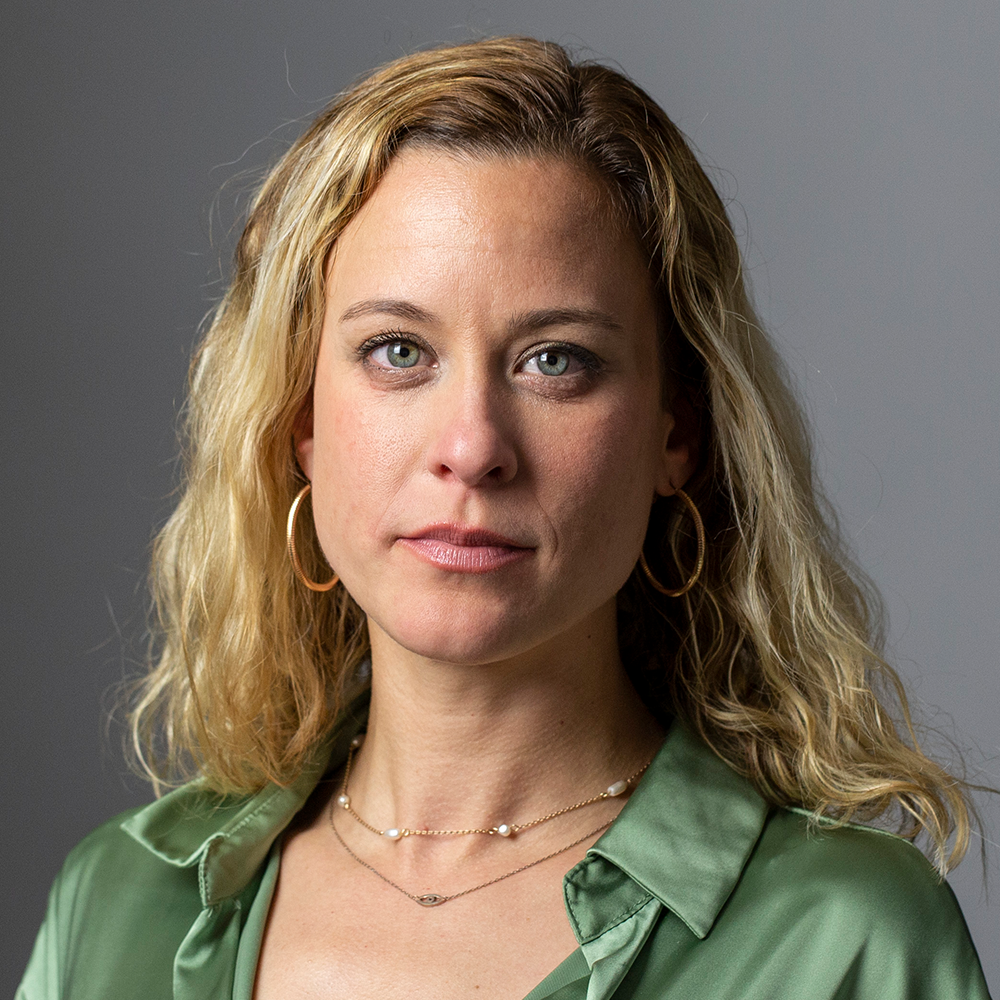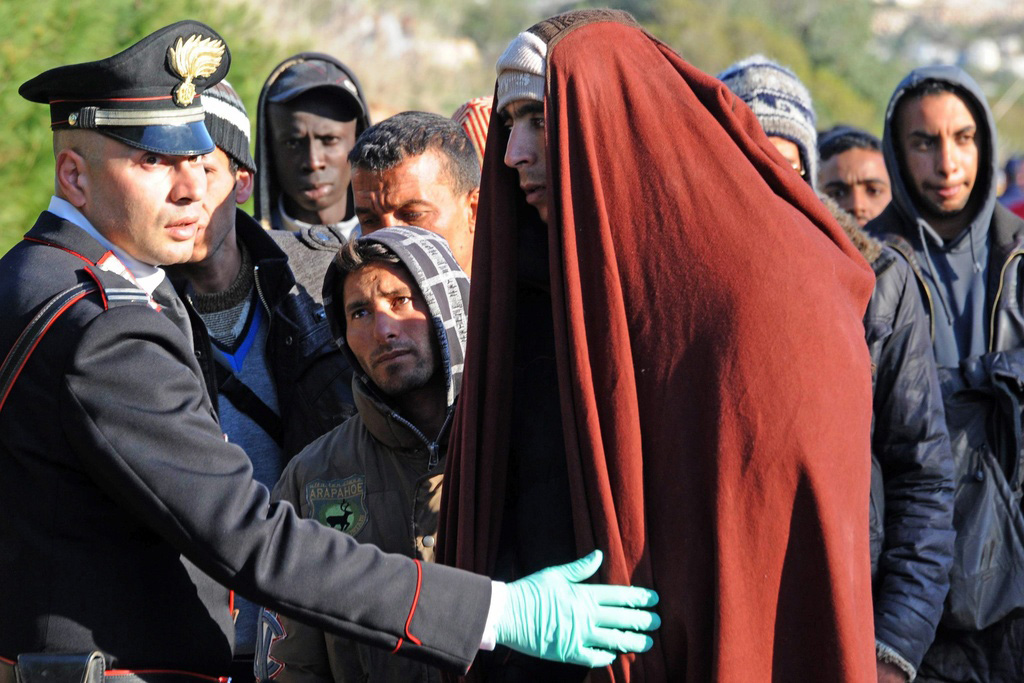Young Tunisians look beyond Switzerland

Thousands of young Tunisians have flooded into the Italian island of Lampedusa after the overthrow in January of the regime of Zine al-Abedine Ben Ali.
Their arrival has sparked fears in Europe of a massive wave of would-be immigrants from North Africa. Switzerland is trying to work with the European Union in finding ways to cope with the situation.
But when Jalel Matri of the Association of Tunisians in Switzerland paid a four day visit to Lampedusa recently, he was amazed at what he saw and heard. And he came back convinced that practically no-one wanted to come to Switzerland.
“I expected to find totally destitute people, but it wasn’t like that at all,” he told swissinfo.ch on his return to Geneva, where he lives.
It was also quite different from his previous visit in 2009, when it had been very difficult to communicate with the would-be immigrants who were being held in a reception centre.
“When 5,200 Tunisians are walking around in a village with a population of 6,000, they are visible!” he said.
“I was able to talk to them at length and they all told me the same story: most of them are between 18 and 26 years old, and between 60 and 70 per cent of them had jobs, mainly in tourism. But because of the drop in the number of tourists following the revolution, they have temporarily been laid off. Others are bus drivers, mechanics or carpenters.”
“Most of them have never left Tunisia before, because they couldn’t get a visa. But now they can go to Europe without worrying about being arrested by the Tunisian police. They get together the 2,000 dinars (about SFr1,500) they need for the trip, form themselves into a group, buy a boat and go.”
Relatives in France
Matri said almost all come from the tourist regions of southern Tunisia. He had not met a single person from one of the poorer regions where the revolution started.
The first arrivals also included escaped prisoners and members of the police force of the old regime.
Their dream is to join family members in France. None but a very few have any wish to remain in Italy – and even fewer want to come to Switzerland, Matri discovered.
“A lot of men from southern Tunisia emigrated to France decades ago, leaving their children behind. Now these children have grown up, and want to rejoin their relatives,” he explained.
Some have come because they were persuaded by other young men from the same neighbourhood, others because they wanted to meet the challenge of going to Europe.
When Matri asked them if their parents knew of their plans, he got the same answer from practically all of them.
“No, otherwise they would never have let us go!”
The crossing, which takes between 24 and 30 hours is no picnic.
“I met one whose brother, along with 22 others, was in a boat that sank. Most of them said they wouldn’t do it a second time. One even told me that if they continued to hold him, he would go home.”
Worries
The young men hang around, killing time in the cafés, whose owners have been told to serve them coffee, but not alcohol. They play football on the square in front of the church, visit the “boat cemetery” – the last resting place of dozens of small craft, confiscated after they making the crossing – and go to greet new arrivals, often friends from back home.
“Since they don’t have identity papers they can’t go to a bank, or make phone calls. They asked me to change money for them – some of them gave me 2,000 dinars all in one go! – to buy chips for their phones or to subscribe to an account for them in an internet café, so that they could connect to Facebook,” Matri said.
“There were some problems with the locals at the beginning, but in general the Tunisians have found them very hospitable, and are grateful to them.”
However, there is some nervousness on the Italian side. The local authorities and some of the people of Lampedusa met members of the Italian parliament last week to ask them to help find a solution.
They are worried about the impact on tourism – a major source of income for the island – and on their families. Just one fight and things could go badly wrong. They know that the influx of Tunisians is going to stop, but they are worried about Africans who could turn up on the island after being driven out of Libya.
Matri is worried about the impact on their home villages and wonders why the Tunisian authorities are letting them leave.
“It’s known exactly where they are leaving from – do they want to depopulate whole villages? Two hundred and fifty have gone from Zarat, a village with a population of 5,000; and 300 have set off from Mahres which has a total population of 3,000. It’s true that there are fewer policemen in Tunisia now, but the national guard and the army are still there.”
“Is it so that they can ask the European Union for more aid?”
North Africans started arriving on the island following the overthrow of the Tunisian regime in January, when border controls were relaxed.
During his visit, Matri met only Tunisians and a few Egyptians.
At first they were brought by people-smugglers in large trawlers able to carry about 200 people; later much smaller boats with only about 30 people started to arrive.
In all, some 6,000 refugees arrived in Lampedusa in February, according to the EU agency for external border security (Frontex).
By February 28 only 600 were left on the island: the remainder had been taken to reception centres in Sicily and southern Italy for further processing.
Italy has asked the European Union for €100 million (SFr130 million) to help it cope with the influx.
No-one knows how many people are likely to try to cross into Europe as a result of the current upheavals in the Arab world.
The island is situated 205km from the Sicilian coast, and 113 from the coast of Tunisia.
It is the main island of the Pelagie group.
It has a permanent population of about 6,000 and an area of about 20 km2. Most of the population live in the only town, Lampedusa.
The main activities are fishing and tourism. Vegetation is sparse.
Since the end of the 1990s, Lampedusa has been a favorite target of would-be migrants attempting to cross the Mediterranean to Europe.
In 2008 more than 36,000 African asylum seekers landed on the island.
(Adapted from French by Julia Slater)

In compliance with the JTI standards
More: SWI swissinfo.ch certified by the Journalism Trust Initiative












You can find an overview of ongoing debates with our journalists here . Please join us!
If you want to start a conversation about a topic raised in this article or want to report factual errors, email us at english@swissinfo.ch.